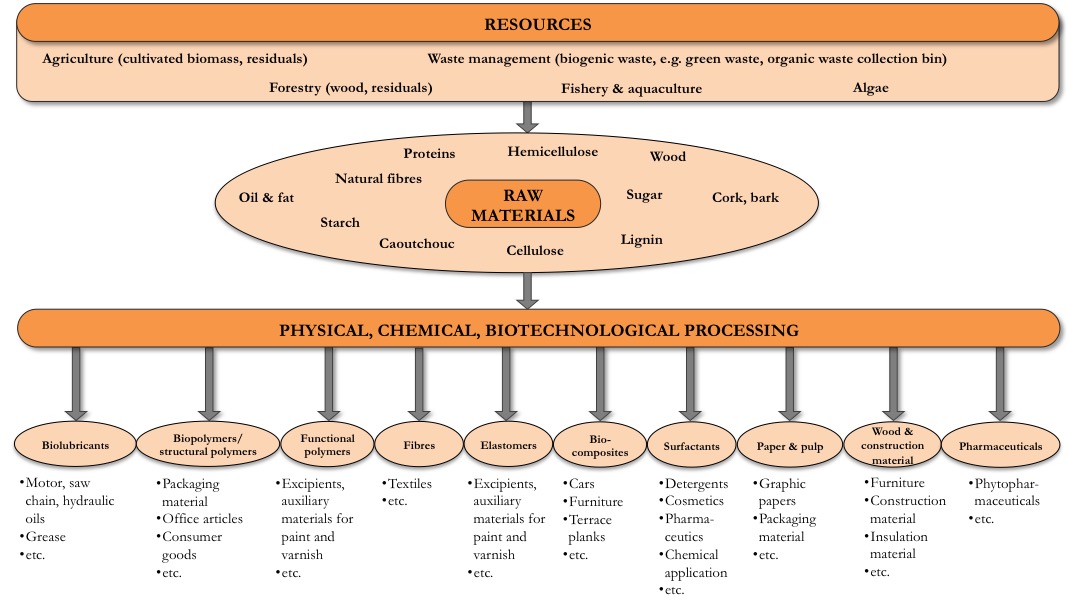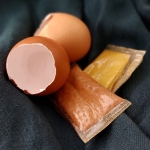Bioeconomy products
The aim of the bioeconomy is to move industry’s raw material base towards a greater use of biogenic raw materials or to increasingly use bioinspired processes and bring to the forefront issues such as climate protection and sustainability. The bioeconomy therefore creates new opportunities for services, technologies and products. Bioeconomy products already exist, especially as far as chemicals and materials are concerned.
According to the European Committee for Standardization (CEN), biobased products are defined as "products wholly or partly derived from biomass, such as plants, trees or animals. A biobased product is normally characterised by biobased carbon content or biobased content. The product may be an intermediate, material, semifinished or final product” (EN 16575: 2014).
In particular, biobased value creation means developing products that can last on the market and meet the sustainability requirements of the bioeconomy. This balancing act is not easy, because biobased products usually have a price disadvantage compared to fossil-based products. The consequential damage to ecosystems is not priced in for fossil-based products. Fossil-based production processes have also been established for many decades and are therefore closely coordinated.
Nevertheless, companies have already achieved economic success with some bioeconomic products. Biobased products have the potential to replace or improve fossil products; biobased products with completely new properties can create completely new solutions. This is made possible through the interplay of technological innovations, as well as environmental and economic benefits. It is not just the raw material base that counts, but also the willingness to innovate with regard to the use and development of biobased technologies.
The diversity of the bioeconomy means that biobased products are not restricted to one industrial sector. There is a relatively broad spectrum of applications and markets. Specific examples of biobased products are shown in the diagram. The focus of a biobased economy is to increase value creation with these and other products, while always bearing sustainability in mind.



